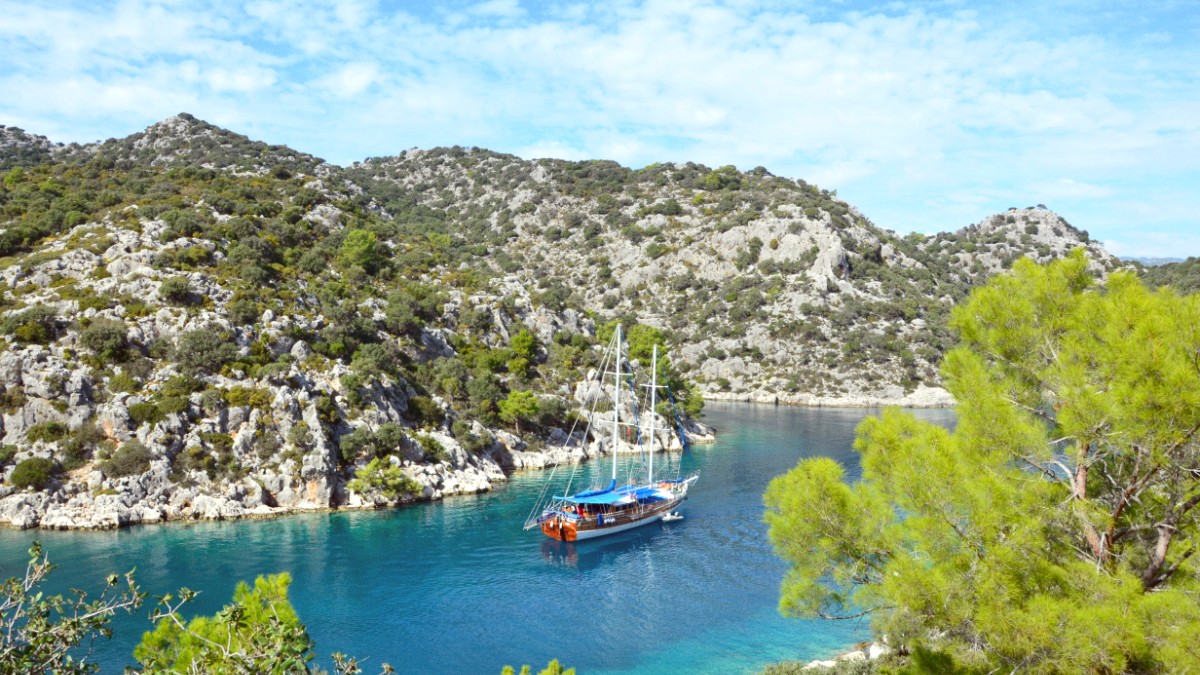
Mediterranean Coast, Turkey
Imagine waking to the gentle lapping of waves against the shore, with the scent of pine trees and sea air. Consider strolling along a long promenade, stretching for miles, where cafes and restaurants invite you to savor local flavors. Picture yourself exploring an ancient castle, its ramparts offering panoramic views of the bay, or losing yourself in the labyrinthine alleys of a bustling bazaar. Marmaris holds all these moments and more. It serves as a gateway to exploring the broader Turkish Riviera, with access to secluded coves, ancient ruins, and picturesque islands.
This guide shares practical information and suggestions to help plan your visit. It details everything from choosing the best time to visit and understanding entry rules to finding suitable accommodation and enjoying local cuisine. Marmaris calls to various travelers, from families seeking resort comforts to solo explorers desiring cultural immersion. Its diverse selections mean every visitor discovers something unique.
The town’s energetic atmosphere contrasts beautifully with the tranquil coves and traditional villages nearby. Spend a day in the sun on a lively beach, then retreat to a quiet eatery for a peaceful evening meal. Those with adventure in mind find chances for water sports, hiking, and jeep safaris. Those interested in history explore local ruins or embark on day trips to world-renowned ancient cities. Marmaris presents itself as a destination that addresses varied preferences, ensuring a rich and fulfilling travel experience. Plan your trip with confidence, knowing this guide covers your needs.
Marmaris sits in a striking position on the southwestern coast of Turkey, specifically within the Mugla Province. It lies where the Aegean Sea and the Mediterranean Sea meet, forming a natural harbor within a large, horseshoe-shaped bay. Pine-forested mountains frame the town, creating a dramatic and picturesque setting. This placement gives Marmaris both sheltered waters and easy access to the broader Turquoise Coast. The town’s unique topography, with its verdant hills extending down to the coastline, makes it stand out.
Marmaris is a long and layered history, stretching back millennia. Its location on the Mediterranean coast made it a desired settlement for various civilizations throughout the ages. The earliest known settlement in the area dates to the 3rd millennium BC, making it a site of ancient human habitation. The town was originally known as Physkos, a Carian city that later came under Rhodian and Roman influence. Evidence of these early periods, though limited, exists within and around the modern town.
A military stronghold for the Ottoman Empire, now housing the Marmaris Archaeology Museum.
Retains historical charm with narrow, winding streets.
A 16th-century Ottoman inn for travelers and merchants.
The earliest known settlement, dating to the 3rd millennium BC.
Ancient burial sites carved into cliffs, accessible by boat trip.
Marmaris caters to a wide array of interests, from beach relaxation and outdoor adventures to historical exploration and lively nightlife. The town’s setting, surrounded by green mountains and fronting a calm, blue bay, creates a picturesque backdrop for all activities. Its long, popular promenade stretches for miles, connecting the bustling center with the quieter resort of Icmeler, good for pleasant walks or bike rides with sea views.
Visitors find diverse dining, with traditional Turkish lokantas serving authentic local dishes, international restaurants, and upscale eateries along the marina. Fresh seafood is a highlight. Shopping opportunities abound, especially in the Grand Bazaar, where polite bargaining for souvenirs, spices, and local crafts is part of the experience. Nightlife centers around Bar Street, with many clubs and discos.
Beyond the immediate town, Marmaris serves as a launchpad for memorable day trips. You can take a ferry to the Greek island of Rhodes, explore the unique travertine terraces of Pamukkale, or wander through the impressive ruins of ancient Ephesus. Closer excursions include the tranquil Dalyan Delta, with its mud baths and Lycian rock tombs, or a relaxing boat trip to secluded coves and islands in Gökova Bay.
Turkish Lira is the local currency, and ATMs are widely available. English is commonly spoken in tourist areas. Safety is generally good, though general precautions apply in crowded areas.
Careful review of requirements helps for a smooth trip to Marmaris. Needs vary based on your nationality and the length of your stay.
This guide covers everything from ideal visiting times to money matters and safety advice, ensuring your journey is well-prepared.
Know the climate patterns for ideal sightseeing or beach activities.
Understand passport, visa, and documentation needs.
Plan daily costs, accommodation, meals, and smart saving ways.
Marmaris is generally a safe destination. Knowing local conditions and taking precautions is good. This includes knowing vaccinations, common health issues, and emergency services.
Hostel dorm or basic guesthouse, street food or local eateries, dolmuş for transport, free beach days.
Comfortable 3-star hotel/apartment, mix of local and higher-end dining, dolmuş/occasional taxis, paid excursions.
4-5 star hotel/resort/villa, fine dining, private transfers/car rentals, exclusive experiences.
5-10% for good service is customary, especially in tourist areas. Rounding up the bill is also common.
Round up the taxi fare or add 5-10%. Small tips ($1-2 USD) for bellhops or housekeeping are appreciated.
Tour guides: $5-10 USD per person per day. Drivers: $3-5 USD. Hamam therapists: 10-15% of service cost.